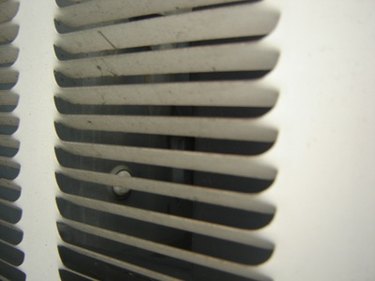
An exhaust fan's static pressure, also known as its pressure drop, describes the resistance the fan must overcome. A larger static pressure forces the fan to consume more power to expel the same amount of air. Technicians typically measure static pressure in inches of water gauge. An inch of water gauge equals approximately 250 Pascals and describes the amount of pressure that displaces one inch of water in a manometer.
Step 1
Multiply the fan's efficiency by the motor's efficiency. If the fan has an efficiency of 0.9, and the motor has an efficiency of 0.75, then 0.9 x 0.75 = 0.675.
Video of the Day
Step 2
Multiply your answer by the drive efficiency. If it has an efficiency of 0.92, then 0.675 x 0.92 = 0.621.
Step 3
Multiply your answer by 6,345, a constant that relates the different airflow factors. With this example, 0.621 x 6,345 = 3,940.
Step 4
Multiply your answer by the fan's power input, measured in brake horsepower (bhp). If the power input is 0.5 bhp, then 3,940 x 0.5 = 1,970.
Step 5
Divide your answer by the system airflow in cubic feet per minute. It the fan moves 200 cfm, then 1,970 / 200 = 9.85. This is the exhaust fan's static pressure.
Video of the Day